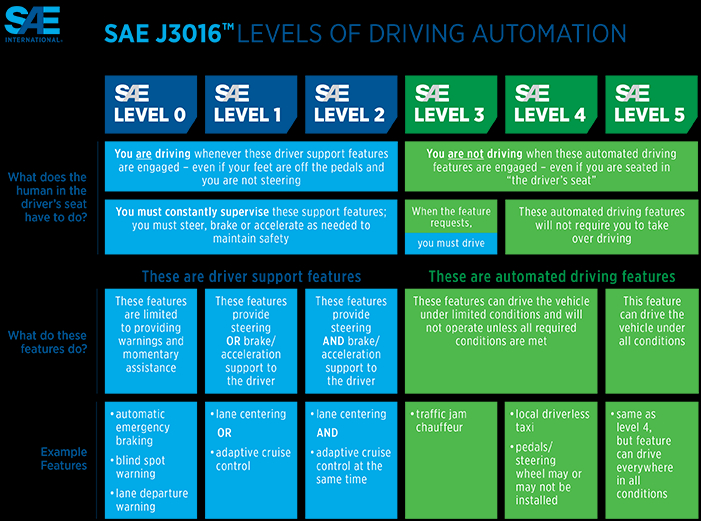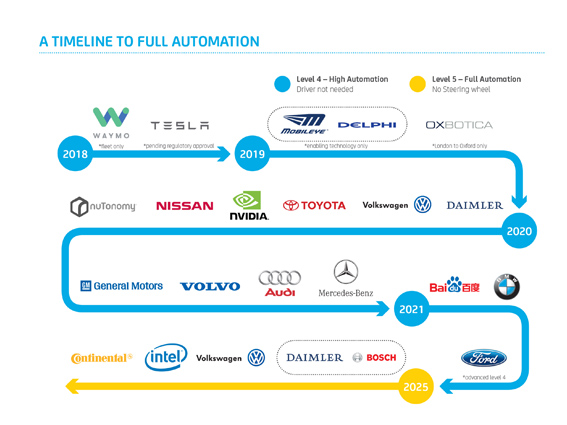Driverless cars: The benefits and what it means for the future of mobility

The privately-owned motor vehicle has been part of the Australian family for at least three generations, but population growth, increasing urban congestion, constraints on housing affordability and cost of living pressures are disrupting the world of auto mobility.
In response to these challenges, companies across the globe, from car manufacturers such as Tesla, Volvo and General Motors, to tech firms such Google’s Waymo and Uber are spending millions attempting to use new forms of technology to alter the concept of how we move around.
Most recently we’ve seen Tesla’s Model 3, the first mass produced electric car, unveiled at Tesla’s factory in Fremont, California.
Closer to home, the NRMA have joined forces with the NSW Government, HMI Technologies, Telstra, IAG and Sydney Olympic Park Authority to launch the very first autonomous shuttle trial in NSW.
The evolution of autonomous cars
But the advancement to fully autonomous will not be a new or sudden concept to any of us. From autonomous emergency braking, lane and parking assist technologies to enable safer driving, to internet connectivity over mobile networks capable of keeping vehicle occupants connected to the online world, driverless technology is present in the form of connectivity and autonomy in vehicles today.
But what exactly is an autonomous vehicle and what are the benefits?
An autonomous vehicle is one that can drive itself from a starting point to a predetermined destination in ‘autopilot’ mode using various in-vehicle technologies and sensors, including adaptive cruise control, active steering, anti-lock braking systems, GPS navigation technology, lasers and radar.
According to SAE International, there are six levels describing the road from a normal vehicle to a fully autonomous ‘Level 5’ vehicle.
This SAE index now globally accepted as the standard for autonomous vehicle development:

When will autonomous vehicles be here?
Fully autonomous vehicle capability – where no human is needed and cars do not even have a steering wheel or accelerator – could be here as early as 2025.

The benefits
- Greatly improved safety: 94% of accidents are caused by human error
- Improved transport interconnectivity
- Reduced congestion: Congestion will cost NSW $6.9 billion in 2017
- Reduced pollution and emissions: Reducing transport energy consumption by up to 90%
- Greater mobility options: For elderly, young and disabled users
- Greater convenience, efficiency and reliability
- Reduced costs and maintenance requirements
Importance of AV trials
While these benefits are clearly desirable, a considerable amount of information is still needed to further our understanding of what is ultimately required for a fully autonomous vehicle future.
“The impact of autonomous vehicles will be profound to the point that it is hard to imagine a section of Australia that won’t be affected," said Kyle Loades, NRMA Chairman.
"Australia is not ready for the mobility revolution and we need to be”
The best way to introduce new technology while simultaneously gaining important insights into consumer perception is through autonomous vehicle trials.
Trials are necessary to examine interactions between autonomous technology, road users, roadside infrastructure and other vehicles.
With the NRMA anticipating highly autonomous vehicles in Australia from 2020, and fully autonomous vehicles from 2025, now is the time to begin the process of determining what the most appropriate regulatory framework looks like.
NRMA’s Future of Car Ownership report outlines the steps we need to take as a nation to maximise the benefits of this mobility revolution; proposing that Australian governments support and promote autonomous vehicle trials to demonstrate the benefits and increase collaboration and knowledge.
“The NRMA was central to the technology revolution of the last century, moving from horse and cart to automobile and will be just as central to this century’s revolution from automobile to autonomous vehicle," said Loades.
To learn more about NRMA’s involvement in legislative changes for autonomous vehicles and trials in NSW, download the first paper from our Future Mobility series.
Australia is not ready for the mobility revolution and we need to be.
— Kyle Loades, NRMA Chairman
Trials are necessary to examine interactions between autonomous technology, road users, roadside infrastructure and other vehicles.
With the NRMA anticipating highly autonomous vehicles in Australia from 2020, and fully autonomous vehicles from 2025, now is the time to begin the process of determining what the most appropriate regulatory framework looks like.
NRMA’s Future of Car Ownership report outlines the steps we need to take as a nation to maximise the benefits of this mobility revolution; proposing that Australian governments support and promote autonomous vehicle trials to demonstrate the benefits and increase collaboration and knowledge.
“The NRMA was central to the technology revolution of the last century, moving from horse and cart to automobile and will be just as central to this century’s revolution from automobile to autonomous vehicle," said Loades.
To learn more about NRMA’s involvement in legislative changes for autonomous vehicles and trials in NSW, download the first paper from our Future Mobility series.


